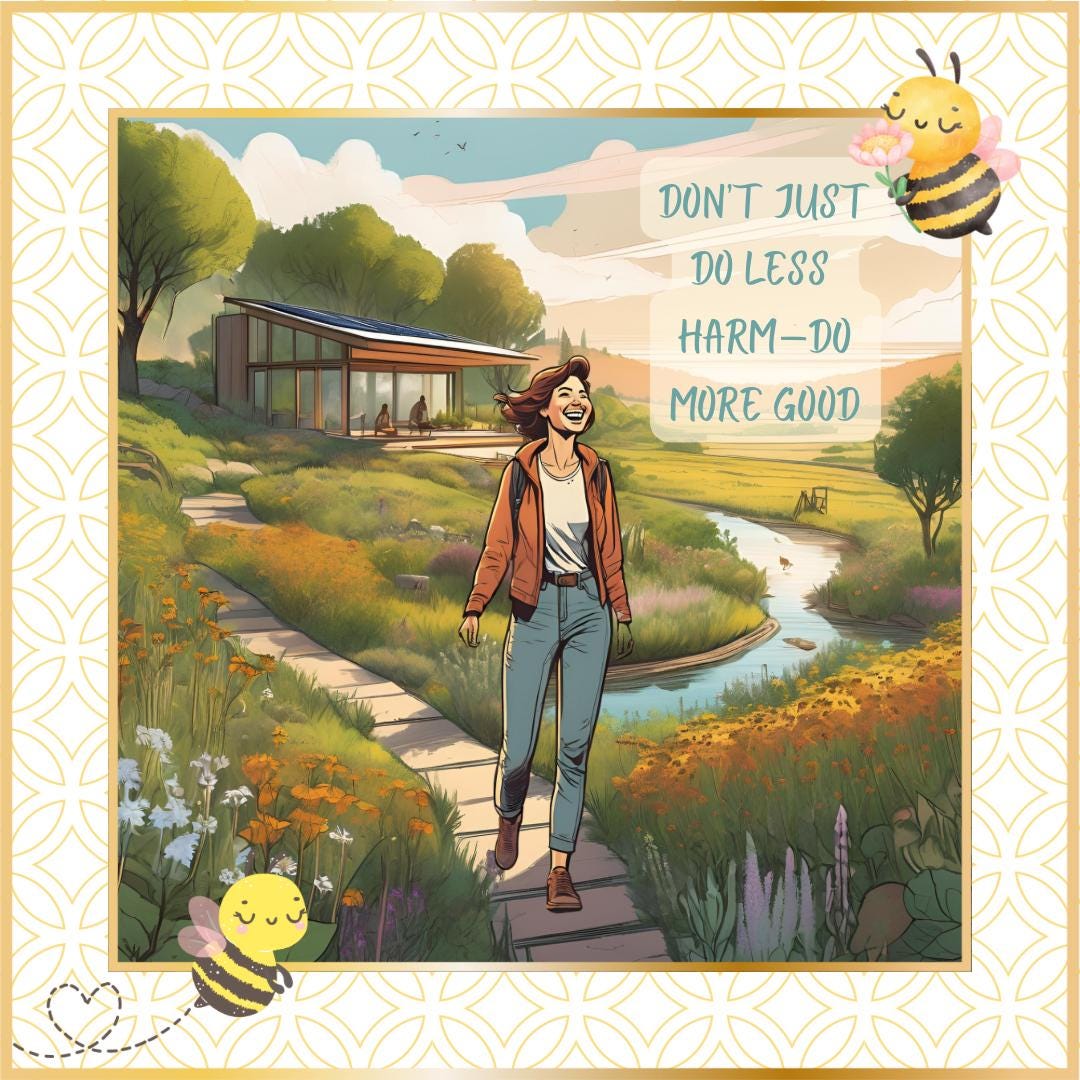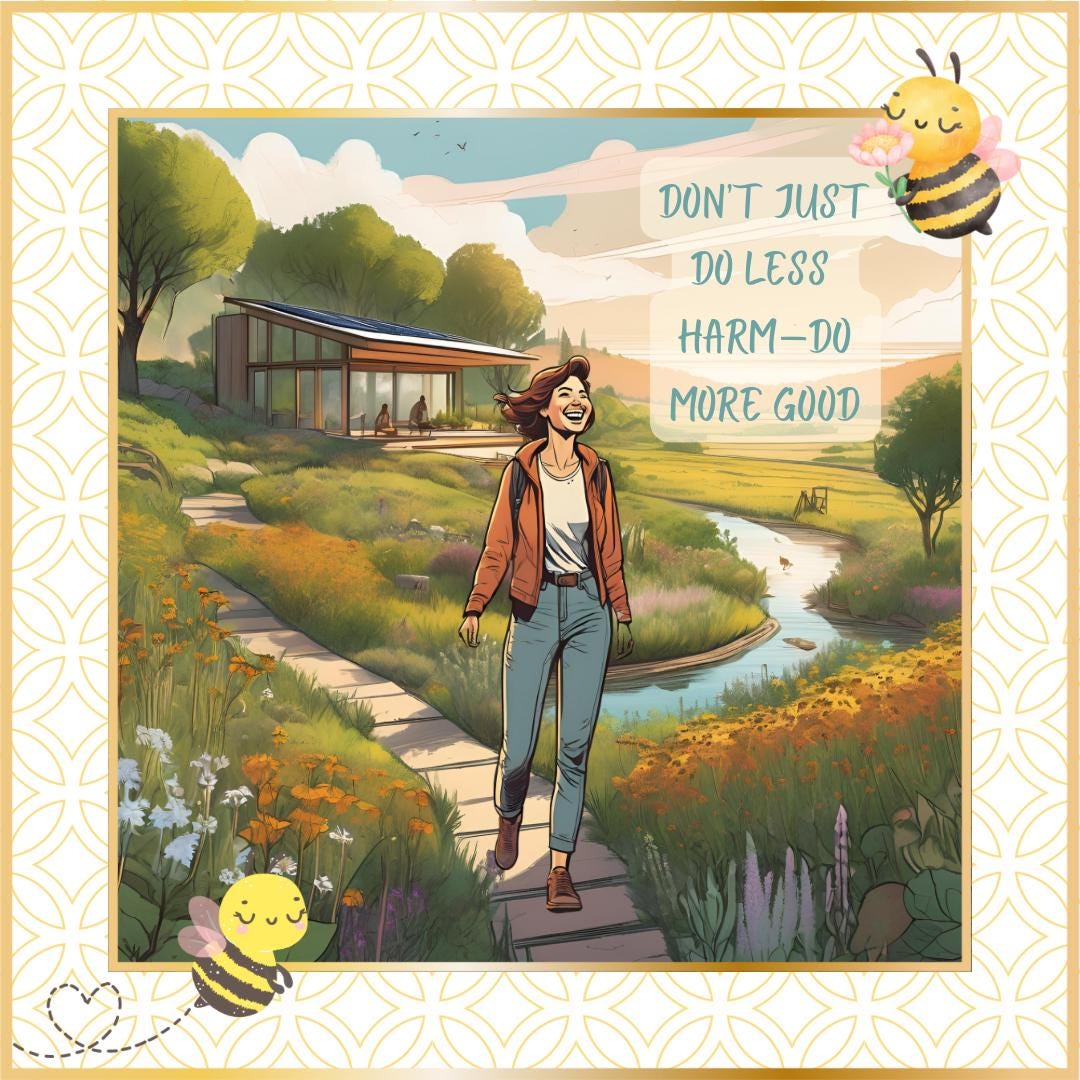
Regenerative Design: Moving Beyond Sustainability to Give Back to the Earth
The world is shifting.
For decades, conversations about climate action, design, and environmental responsibility have centered around sustainability—doing less harm, reducing impact, conserving resources. Sustainability has been essential in slowing the pace of degradation, but as our planet faces escalating climate crises, loss of biodiversity, and depleted ecosystems, it’s clear that sustainability alone is not enough.
What the Earth needs now is not less harm, but active healing. Enter: regenerative design.
What Is Regenerative Design?
Regenerative design is a holistic approach that goes beyond minimizing damage to actually restoring, revitalizing, and replenishing the natural systems upon which all life depends. Unlike sustainable practices that aim to maintain the status quo, regenerative design seeks to create conditions conducive to life—not just human life, but all forms of life.
It is inspired by ecosystems, indigenous knowledge, and biological intelligence. It asks, not “How can we use fewer resources?” but “How can we design systems that give more than they take?”
In practice, regenerative design involves closed-loop systems, biodiversity regeneration, social equity, and a deep reverence for place. It includes everything from buildings that purify water and produce energy, to farms that rebuild topsoil and sequester carbon, to products made with materials that replenish the Earth rather than deplete it.
Why We Must Move Beyond Sustainability
Sustainability is still critical—but it is reactive. It works within existing models to reduce harm. Regenerative design, on the other hand, is proactive. It recognizes that systems must evolve to become truly life-giving.
For example, a sustainable fashion brand might use organic cotton and low-impact dyes. A regenerative approach would source fibers from farms practicing regenerative agriculture, restoring ecosystems, enhancing soil health, and sequestering carbon.
A sustainable building might use efficient HVAC systems and LED lights. A regenerative building, in contrast, would generate its own clean energy, capture and reuse water, and even enhance the biodiversity of the landscape.
This shift in mindset is rooted in deep ecology—the idea that humans are not separate from nature, but part of it. Regenerative design challenges us to realign our work with the rhythms of the Earth, and to participate in a larger ecological intelligence.

Photo Credit: Photo by Nic Lehoux, courtesy of Bullitt Center
https://living-future.org/lbc/case-studies/bullitt-center/
Regenerative Design in Action
Regenerative design is already transforming a range of industries:
- Architecture and Urbanism: Buildings like the Bullitt Center in Seattle generate their own electricity, capture rainwater, and process waste on-site, creating net-positive structures (Living Building Challenge, 2024). Urban regeneration projects integrate green infrastructure that supports ecosystems and community well-being.
- Agriculture: Regenerative farming techniques—like cover cropping, rotational grazing, and agroforestry—restore soil, enhance biodiversity, and sequester carbon. These methods are being recognized as powerful tools in the fight against climate change (Rhodes, 2017).
- Product and Fashion Design: Designers are exploring regenerative materials—like hemp, seaweed, and mycelium—that are renewable, biodegradable, and even improve soil or water conditions through their cultivation (McDonough and Braungart, 2002).
- Community and Social Systems: Regenerative principles are also being applied to human systems—centering equity, cultural resilience, and mutual care. Regeneration is not just about ecology; it’s about relationships and reciprocity.
Guiding Principles of Regenerative Design
- Design for Whole Systems: Consider the full lifecycle and ripple effects of a product, system, or structure. Nothing exists in isolation.
- Work With Nature, Not Against It: Biomimicry—learning from and emulating natural systems—can lead to solutions that are inherently restorative.
- Value Place and Context: Regenerative design is deeply local. It asks, “What does this place want to become?” and “What will thrive here?”
- Prioritize Circularity: Waste is a human concept. In nature, everything becomes nourishment for something else.
- Honor Indigenous Knowledge: Indigenous communities have practiced regenerative stewardship for millennia. Listening and learning from their wisdom is essential.
- Focus on Net Positive Outcomes: Strive not just to be “less bad,” but to be actively good for people, planet, and future generations.
Why Regeneration Is a Cultural Shift
At its heart, regenerative design is not just a methodology—it is a worldview.
It challenges the modern myth of separation: that humans are somehow outside or above nature. Instead, it calls us to remember our place within the web of life. It requires humility, curiosity, and a willingness to listen—to ecosystems, to communities, to the land itself.
Regenerative design doesn’t just ask us to build better buildings or make better products—it asks us to become better ancestors.
A Hopeful Future
The beauty of regeneration is that it’s already happening. All around the world, communities, designers, architects, artists, and farmers are creating models of abundance, resilience, and healing. They remind us that we are not powerless—we are co-creators of the future.
The Earth has an incredible capacity to heal, if we give it the chance.
So let us move beyond sustainability. Let us design with intention, reverence, and joy. Let us give back to the Earth not out of guilt or fear, but out of deep love—for life, for future generations, and for the miraculous planet we call home.
Works Cited
Kimmerer, Robin Wall. Braiding Sweetgrass: Indigenous Wisdom, Scientific Knowledge and the Teachings of Plants. Milkweed Editions, 2013.
Living Building Challenge. “The Bullitt Center.” International Living Future Institute, 2024, https://living-future.org/lbc/case-studies/bullitt-center/.
Photo Credit: Photo by Nic Lehoux, courtesy of Bullitt Center
Mang, Pamela, and Ben Haggard. Regenerative Development and Design: A Framework for Evolving Sustainability. Wiley, 2016.
McDonough, William, and Michael Braungart. Cradle to Cradle: Remaking the Way We Make Things. North Point Press, 2002.
Rhodes, Christopher J. “The Imperative for Regenerative Agriculture.” Science Progress, vol. 100, no. 1, 2017, pp. 80–129. https://doi.org/10.3184/003685017X14876775256165
